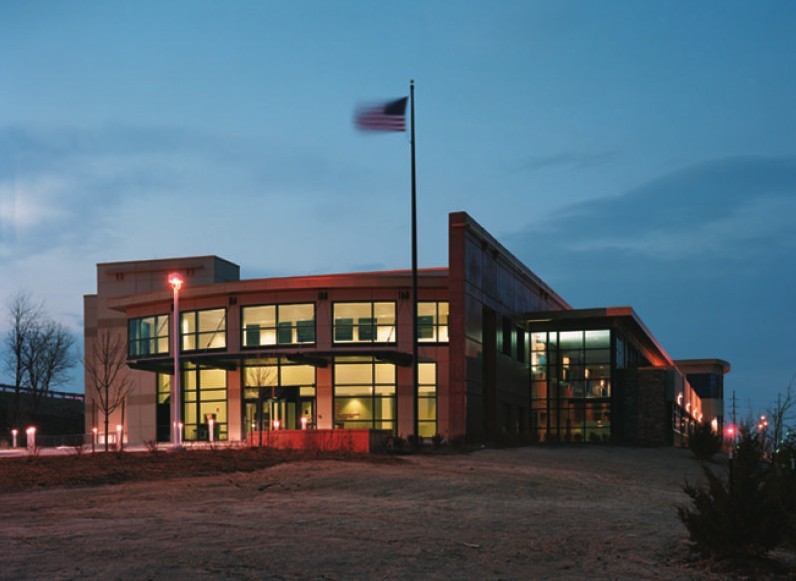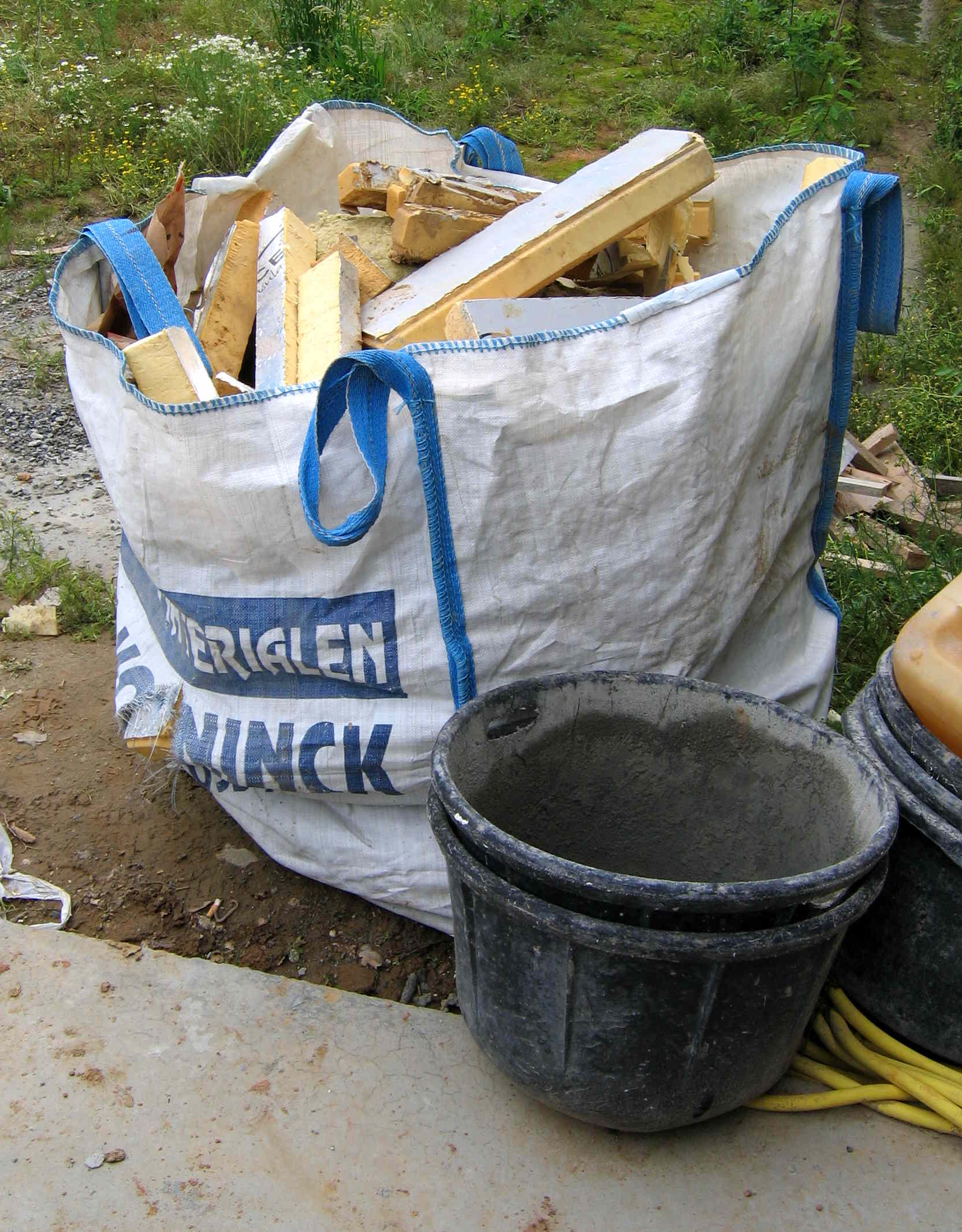|
Building Material
Building material is material used for construction. Many naturally occurring substances, such as clay, rocks, sand, wood, and even twigs and leaves, have been used to construct buildings. Apart from naturally occurring materials, many man-made products are in use, some more and some less synthetic. The manufacturing of building materials is an established industry in many countries and the use of these materials is typically segmented into specific specialty trades, such as carpentry, insulation, plumbing, and roofing work. They provide the make-up of habitats and structures including homes. The total cost of building materials In history, there are trends in building materials from being natural to becoming more man-made and composite; biodegradable to imperishable; indigenous (local) to being transported globally; repairable to disposable; chosen for increased levels of fire-safety, and improved seismic resistance. These trends tend to increase the ''initial'' and ... [...More Info...] [...Related Items...] OR: [Wikipedia] [Google] [Baidu] |
Concrete Rebar 0030
Concrete is a composite material composed of fine and coarse aggregate bonded together with a fluid cement (cement paste) that hardens (cures) over time. Concrete is the second-most-used substance in the world after water, and is the most widely used building material. Its usage worldwide, ton for ton, is twice that of steel, wood, plastics, and aluminum combined. Globally, the ready-mix concrete industry, the largest segment of the concrete market, is projected to exceed $600 billion in revenue by 2025. This widespread use results in a number of environmental impacts. Most notably, the production process for cement produces large volumes of greenhouse gas emissions, leading to net 8% of global emissions. Other environmental concerns include widespread illegal sand mining, impacts on the surrounding environment such as increased surface runoff or urban heat island effect, and potential public health implications from toxic ingredients. Significant research and development is ... [...More Info...] [...Related Items...] OR: [Wikipedia] [Google] [Baidu] |
Indoor Air Pollution
Indoor air quality (IAQ) is the air quality within and around buildings and structures. IAQ is known to affect the health, comfort, and well-being of building occupants. Poor indoor air quality has been linked to sick building syndrome, reduced productivity, and impaired learning in schools. Common pollutants of indoor air include: Secondhand tobacco smoke, air pollutants from indoor combustion, radon, molds and other allergens, carbon monoxide, volatile organic compounds, legionella and other bacteria, asbestos fibers, carbon dioxide, ozone and particulates. Source control, filtration, and the use of ventilation to dilute contaminants are the primary methods for improving indoor air quality in most buildings. Determination of IAQ involves the collection of air samples, monitoring human exposure to pollutants, collection of samples on building surfaces, and computer modelling of air flow inside buildings. IAQ is part of indoor environmental quality (IEQ), which includes I ... [...More Info...] [...Related Items...] OR: [Wikipedia] [Google] [Baidu] |
Branches
A branch, sometimes called a ramus in botany, is a woody structural member connected to the central trunk of a tree (or sometimes a shrub). Large branches are known as boughs and small branches are known as twigs. The term ''twig'' usually refers to a terminus, while ''bough'' refers only to branches coming directly from the trunk. Due to a broad range of species of trees, branches and twigs can be found in many different shapes and sizes. While branches can be nearly horizontal, vertical, or diagonal, the majority of trees have upwardly diagonal branches. A number of mathematical properties are associated with tree branchings; they are natural examples of fractal patterns in nature, and, as observed by Leonardo da Vinci, their cross-sectional areas closely follow the da Vinci branching rule. Terminology Because of the enormous quantity of branches in the world, there are numerous names in English alone for them. In general however, unspecific words for a branch (such as ... [...More Info...] [...Related Items...] OR: [Wikipedia] [Google] [Baidu] |
View Of A Group Of Mohaves In A Brush Hut, One Man Very Emaciated, Entitled, By Wittick, Ben, 1845-1903
A view is a sight or prospect or the ability to see or be seen from a particular place. View, views or Views may also refer to: Common meanings * View (Buddhism), a charged interpretation of experience which intensely shapes and affects thought, sensation, and action * Graphical projection in a technical drawing or schematic ** Multiview orthographic projection, standardizing 2D images to represent a 3D object * Opinion, a belief about subjective matters * Page view, a visit to a World Wide Web page * Panorama, a wide-angle view * Scenic viewpoint, an elevated location where people can view scenery * World view, the fundamental cognitive orientation of an individual or society encompassing the entirety of the individual or society's knowledge and point-of-view Places * View, Kentucky, an unincorporated community in Crittenden County * View, Texas, an unincorporated community in Taylor County Arts, entertainment, and media Music * ''View'' (album), the 2003 debut album ... [...More Info...] [...Related Items...] OR: [Wikipedia] [Google] [Baidu] |
Labor Rights
Labor rights or workers' rights are both legal rights and human rights relating to labor relations between workers and employers. These rights are codified in national and international labor and employment law. In general, these rights influence working conditions in relations of employment. One of the most prominent is the right to freedom of association, otherwise known as the right to organize. Workers organized in trade unions exercise the right to collective bargaining to improve working conditions. Labor background Throughout history, workers claiming some sort of right have attempted to pursue their interests. During the Middle Ages, the Peasants' Revolt in England expressed demand for better wages and working conditions. One of the leaders of the revolt, John Ball famously argued that people were born equal saying, "When Adam delved and Eve span, who was then the gentleman?" Laborers often appealed to traditional rights. For instance, English peasants fought against ... [...More Info...] [...Related Items...] OR: [Wikipedia] [Google] [Baidu] |
Fair Trade
Fair trade is an arrangement designed to help producers in developing countries achieve sustainable and equitable trade relationships. The fair trade movement combines the payment of higher prices to exporters with improved social and environmental standards. The movement focuses in particular on commodities, or products that are typically exported from developing countries to developed countries but is also used in domestic markets (e.g., Brazil, the United Kingdom and Bangladesh), most notably for handicrafts, coffee, cocoa, wine, sugar, fruit, flowers and gold. Fair trade labelling organizations commonly use a definition of ''fair trade'' developed by FINE, an informal association of four international fair trade networks: Fairtrade Labelling Organizations International, World Fair Trade Organization (WFTO), Network of European Worldshops and European Fair Trade Association (EFTA). Fair trade, by this definition, is a trading partnership based on dialogue, transparency a ... [...More Info...] [...Related Items...] OR: [Wikipedia] [Google] [Baidu] |
Embodied Energy
Embodied energy is the sum of all the energy required to produce any goods or services, considered as if that energy was incorporated or 'embodied' in the product itself. The concept can be useful in determining the effectiveness of energy-producing or energy saving devices, or the "real" replacement cost of a building, and, because energy-inputs usually entail greenhouse gas emissions, in deciding whether a product contributes to or mitigates global warming. One fundamental purpose for measuring this quantity is to compare the amount of energy produced or saved by the product in question to the amount of energy consumed in producing it. Embodied energy is an accounting method which aims to find the sum total of the energy necessary for an entire product lifecycle. Determining what constitutes this lifecycle includes assessing the relevance and extent of energy into raw material extraction, transport, manufacture, assembly, installation, disassembly, deconstruction and/or decomp ... [...More Info...] [...Related Items...] OR: [Wikipedia] [Google] [Baidu] |
Sustainable Development
Sustainable development is an organizing principle for meeting human development goals while also sustaining the ability of natural systems to provide the natural resources and ecosystem services on which the economy and society depend. The desired result is a state of society where living conditions and resources are used to continue to meet human needs without undermining the integrity and stability of the natural system. Sustainable development was defined in the 1987 Brundtland Report as "Development that meets the needs of the present generation without compromising the ability of future generations to meet their own needs".United Nations General Assembly (1987''Report of the World Commission on Environment and Development: Our Common Future'' Transmitted to the General Assembly as an Annex to document A/42/427 – Development and International Co-operation: Environment. As the concept of sustainable development developed, it has shifted its focus more towards the economic ... [...More Info...] [...Related Items...] OR: [Wikipedia] [Google] [Baidu] |
Green Building
Green building (also known as green construction or sustainable building) refers to both a structure and the application of processes that are environmentally responsible and resource-efficient throughout a building's life-cycle: from planning to design, construction, operation, maintenance, renovation, and demolition. This requires close cooperation of the contractor, the architects, the engineers, and the client at all project stages.Yan Ji and Stellios Plainiotis (2006): Design for Sustainability. Beijing: China Architecture and Building Press. The Green Building practice expands and complements the classical building design concerns of economy, utility, durability, and comfort. Green building also refers to saving resources to the maximum extent, including energy saving, land saving, water saving, material saving, etc., during the whole life cycle of the building, protecting the environment and reducing pollution, providing people with healthy, comfortable and efficient u ... [...More Info...] [...Related Items...] OR: [Wikipedia] [Google] [Baidu] |
Construction Waste
Construction waste or debris is any kind of debris from the construction process. Different government agencies have clear definitions. For example, the United States Environmental Protection Agency EPA defines construction and demolition materials as “debris generated during the construction, renovation and demolition of buildings, roads, and bridges.” Additionally, the EPA has categorized Construction and Demolition (C&D) waste into three categories: non-dangerous, hazardous, and semi-hazardous. Of total waste in the United States, 90% comes from the demolition of structures, while waste generated during construction accounts for less than 10%. Construction waste frequently includes materials that are hazardous if disposed of in landfills. Such items inculude fluorescent lights, batteries, and other electrical equipment. When waste is created, options of disposal include exportation to a landfill, incineration, direct site reuse through integration into construction or ... [...More Info...] [...Related Items...] OR: [Wikipedia] [Google] [Baidu] |
Deconstruction (building)
In the context of physical construction, deconstruction is the selective dismantlement of building components, specifically for reuse, repurposing, recycling, and waste management. It differs from demolition where a site is cleared of its building by the most expedient means. Deconstruction has also been defined as "construction in reverse". Deconstruction requires a substantially higher degree of hands-on labor than does traditional demolition, but as such provides a viable platform for unskilled or unemployed workers to receive job skills training. The process of dismantling structures is an ancient activity that has been revived by the growing fields of sustainable and green building. When buildings reach the end of their useful life, they are typically demolished and hauled to landfills. Building implosions or ‘wrecking-ball’ style demolitions are relatively inexpensive and offer a quick method of clearing sites for new structures. On the other hand, these methods c ... [...More Info...] [...Related Items...] OR: [Wikipedia] [Google] [Baidu] |



.jpg)


_CL_5-door_hatchback_03.jpg)


